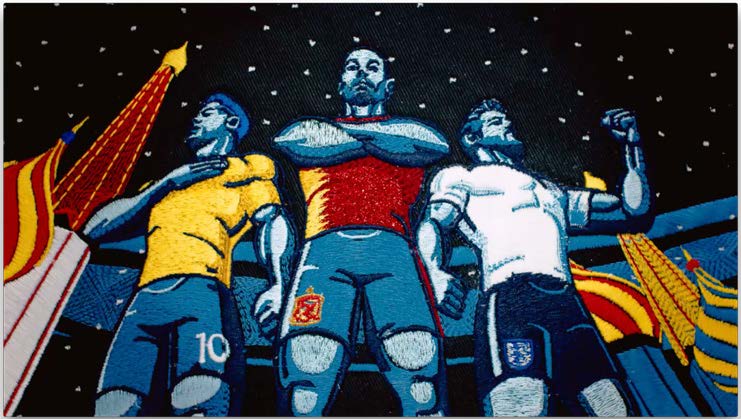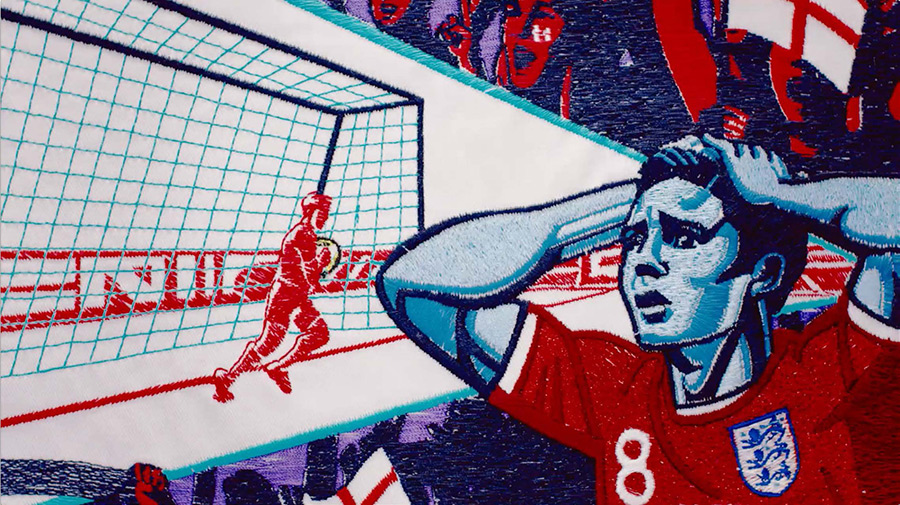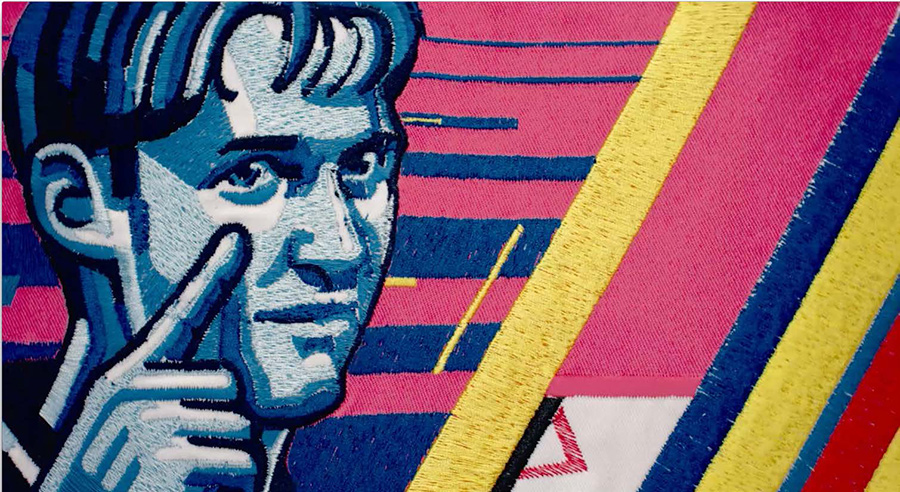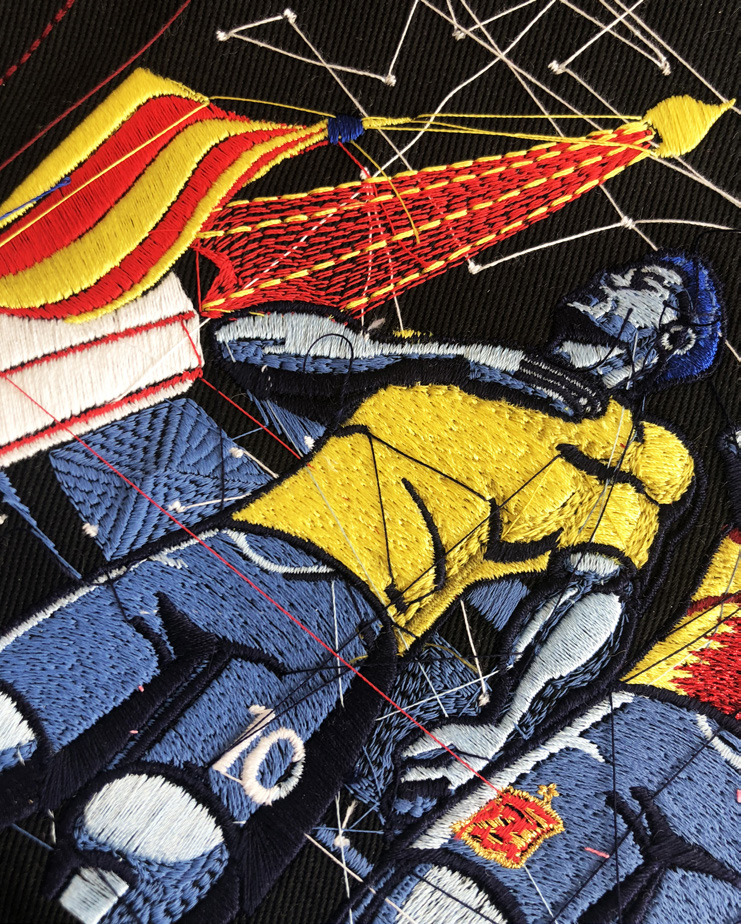
Find out how The London Embroidery Studio made this happen.
I think it is safe to say that the catch phrase used in the World Cup 2018 trailer “History will be made” also applies to the work The London Embroidery Studio undertook to complete the gigantic task of creating the embroidery for this incredible animation.
History was definitely made when it comes to machine embroidery and it was made using EmbroideryStudio e4 Designing!
We talked to director Andrew Kenny about the digitizing and embroidery work behind the spectacular animated film.
How did the job come about?
In November last year, we were approached by BBC Creative to make a test frame for an embroidered stop-frame animation, celebrating the 2018 World Cup. We were successful at our bid and began working with production company Blinkink to create the embroidered frames for the one-minute trailer.
What was the scope of the job and how long did it take to complete it?
We digitized and embroidered 650 frames at 28cm x 19cm. To complete this huge task we had to hire 14 digitizers and run our embroidery machines 23 hours a day. It took just over three weeks to get it all done.

How long did it take to create each design?
It took a really long time! We had about 15 people digitising and we would give each person a different character or have one person working on the background and another on the foreground then put them together. It is difficult to say how long they took, but it was not a quick process. Possibly around 2-3 hours per frame, but some could be slightly longer depending on how much detail there was in them.
What was the approximate stitch count of each patch?
The stitch count varied per frame, but they were around 50,000-70,000 each.

Was auto-digitizing used, or was it all manually digitized?No auto digitising was used, only manual digitizng. We mainly used ‘Complex Turning’, ‘Complex fill’ and ‘digitise running’.
Many of the objects appear to have a hand / organic open-stitch feel to them simulating classic tapestry stitching. How were you able to create this effect in EmbroideryStudio e4?
We used a lot of tatami with a long stitch length, sometimes more open spacing, random stitch lengths and often with a Florentine effect. We also used offset fills and a lot of regular satin stitch drawn with ‘complex turning’ or ‘column A’.

It appears the trimmer was disabled on the machine. Was this a deliberate move to speed up the sewing of the designs?
Yes! The designs were drawn quickly and not optimised for production so this speeded things up by quite a lot.

What will happen to the embroidered frames?
When laid out, the frames form a 5.5 metre tapestry with two large-scale frames for the beginning and end sequences of the animation. The tapestry will be exhibited at the National football Museum, Manchester in the summer.
EmbroideryStudio e4 makes the world’s favourite digitizing software even better. It is the embroidery software choice for professional digitizers, custom embroidery shops, industry trainers and educators and apparel decorators, who are serious about commercial embroidery.
Contact your local Wilcom distributor now and have a chat about how EmbroideryStudio e4 can make your business more efficient and productive!
Did you enjoy this article? Please let us know in a comment below!
